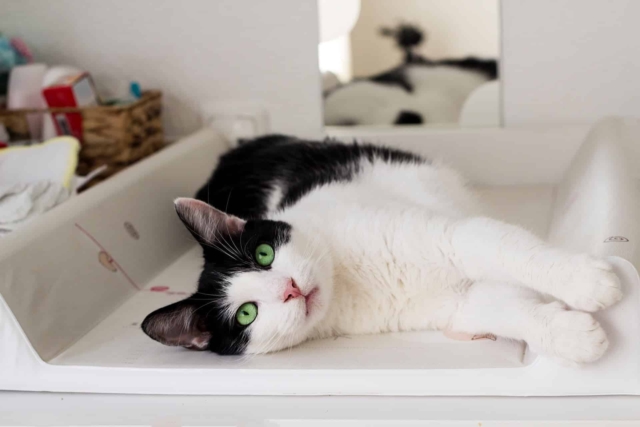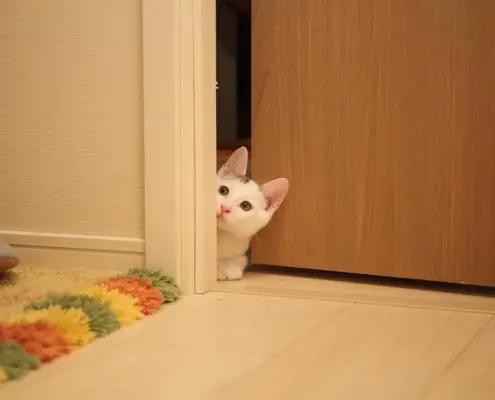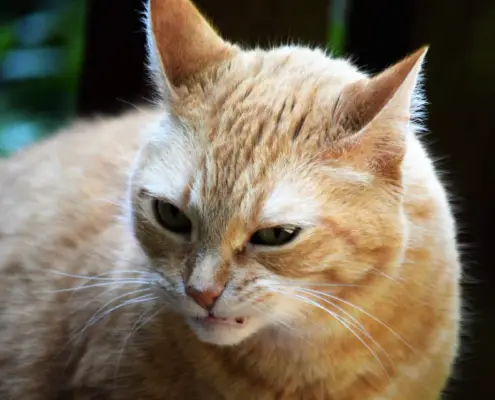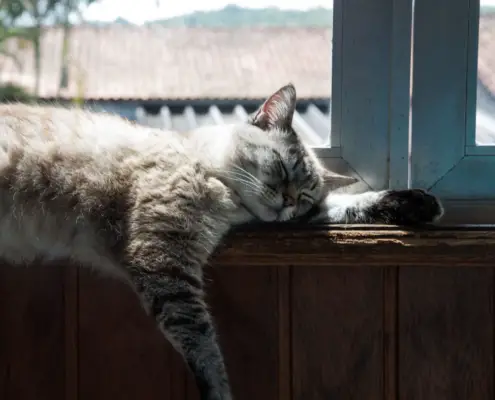
The history of space exploration is full of incredible achievements, but one of the most extraordinary stories is that of the first cat to go to space. This feline pioneer, whose name was Félicette, was sent into space in 1963 as part of a French space program. Although Félicette’s journey was brief, it was a remarkable milestone in the history of space travel and animal testing. This article will explore the story of Félicette and examine the impact of her mission on the future of space exploration.
Introduction to the First Cat to Go to Space
In the early years of space exploration, animals were often used to test the safety of space travel before humans were sent into orbit. Dogs, monkeys, mice, and rats were all sent into space to test the effects of weightlessness and radiation. But in 1963, France decided to send a cat into space. Félicette was selected for this mission, and her journey into space was a remarkable achievement.
Félicette was a black and white cat who was chosen for the mission because of her calm temperament. She was trained for the mission by electrodes being implanted into her brain so that her reactions could be monitored. Félicette’s mission was to be launched into space, experience weightlessness, and then return to Earth. She was not expected to survive the mission, but she was expected to provide valuable data about the effects of space travel on living creatures.
The History of Space Exploration and Animal Testing
The use of animals in space exploration dates back to the 1940s, when the United States began experimenting with sending fruit flies into space. In the years that followed, dogs, monkeys, mice, and rats were all sent into space to test the effects of weightlessness and radiation. These experiments were important in helping scientists understand the challenges of space travel and how to protect human astronauts from the dangers of space.
However, the use of animals in space research has always been controversial. Animal welfare advocates argue that sending animals into space is cruel and unnecessary, while others argue that it is a necessary step in advancing space exploration. Despite the controversy, animals are still used in space research today, although there are now strict regulations in place to protect their welfare.
The Selection and Preparation of the First Cat Astronaut
Félicette was selected for the mission because of her calm temperament and her ability to adapt to new situations. She was trained for the mission by electrodes being implanted into her brain so that her reactions could be monitored. Félicette’s mission was to be launched into space, experience weightlessness, and then return to Earth. She was not expected to survive the mission, but she was expected to provide valuable data about the effects of space travel on living creatures.
The preparation for Félicette’s mission was intense and involved many tests and simulations. She was placed in a centrifuge to simulate the G-forces she would experience during launch, and she was exposed to loud noises and bright lights to prepare her for the noise and light of the launch. Félicette was also placed in a mock spacecraft to familiarize her with the environment she would experience in space.
The Extraordinary Journey into Space
Félicette’s journey into space was a remarkable achievement. On October 18, 1963, Félicette was launched into space aboard a Veronique AG1 rocket. She experienced weightlessness for about five minutes before being brought back to Earth. Although Félicette’s journey was brief, it provided valuable data about the effects of space travel on living creatures.
After her mission, Félicette was euthanized so that scientists could study her brain and learn more about the effects of space travel on her body. Although Félicette’s mission was controversial, it was a significant achievement in the history of space exploration.
The Impact of the First Cat’s Space Mission
Félicette’s mission had a significant impact on the future of space exploration. Her journey provided valuable data about the effects of space travel on living creatures, and this data was used to help protect human astronauts in future missions. Félicette’s journey also inspired a new generation of scientists and explorers who were eager to push the boundaries of space travel.
However, Félicette’s mission also sparked controversy about the use of animals in space research. Many animal welfare advocates argued that sending animals into space was cruel and unnecessary, and they called for an end to animal testing in space research. Despite these concerns, animals are still used in space research today, although there are now strict regulations in place to protect their welfare.
Controversies and Ethical Considerations Surrounding Animal Testing in Space
The use of animals in space research has always been controversial. Animal welfare advocates argue that sending animals into space is cruel and unnecessary, while others argue that it is a necessary step in advancing space exploration. Despite the controversy, animals are still used in space research today, although there are now strict regulations in place to protect their welfare.
The ethical considerations surrounding animal testing in space are complex. On the one hand, animal testing has helped to advance our understanding of space travel and has provided valuable data that has helped to protect human astronauts. On the other hand, animal testing is often cruel and inhumane, and it raises questions about the value we place on the lives of other creatures.
The Legacy of the First Cat’s Space Mission
Félicette’s mission had a significant impact on the future of space exploration. Her journey provided valuable data about the effects of space travel on living creatures, and this data was used to help protect human astronauts in future missions. Félicette’s journey also inspired a new generation of scientists and explorers who were eager to push the boundaries of space travel.
Félicette’s legacy lives on today. Her mission is remembered as a significant achievement in the history of space exploration, and it continues to inspire new generations of scientists and explorers.
Remembering the First Cat Astronaut
Although Félicette’s mission was brief, she will always be remembered as the first cat to go to space. Her journey was a remarkable achievement, and it inspired a new generation of scientists and explorers. Although Félicette’s life was short, her legacy lives on today.
Future Prospects for Animal Involvement in Space Exploration
The use of animals in space research is still a controversial topic, but there are now strict regulations in place to protect their welfare. In the future, it is likely that animals will continue to be used in space research, but there will be a greater emphasis on minimizing their suffering and ensuring their welfare.
Despite the controversies surrounding animal testing in space, there is no doubt that it has helped to advance our understanding of space travel and has provided valuable data that has helped to protect human astronauts. As we continue to push the boundaries of space exploration, it is important that we take these ethical considerations into account and ensure that we are treating all living creatures with the respect and care they deserve.
Conclusion
The first cat to go to space, Félicette, was a remarkable pioneer in the history of space exploration. Her journey into space provided valuable data about the effects of space travel on living creatures, and it inspired a new generation of scientists and explorers. Although Félicette’s mission was controversial, it was a significant achievement in the history of space exploration.
As we look to the future of space exploration, it is important that we continue to push the boundaries of science and exploration, while also taking into account the ethical considerations surrounding animal testing. By working together, we can ensure that we are advancing our understanding of space travel in a way that is both innovative and compassionate.
If you enjoyed my article, I would appreciate you sharing it with your network.

Sima Ndlebe
Sima writes for CatBuzz. He is interested in Cats, Health and Fitness, and Entrepreneurship.
Published: 30 October 2023



